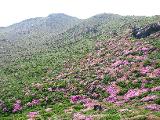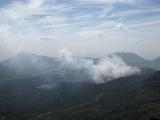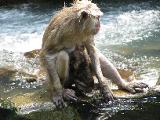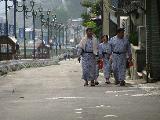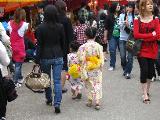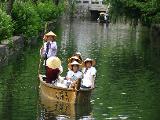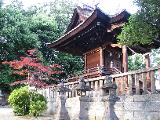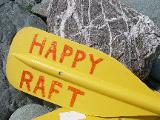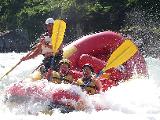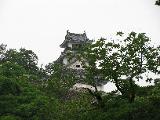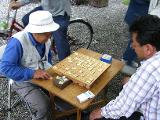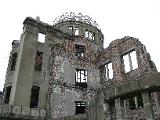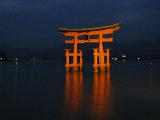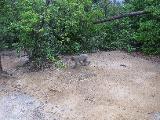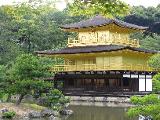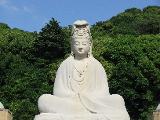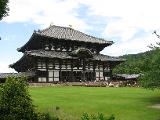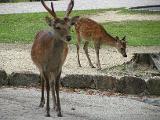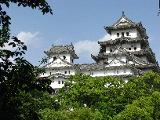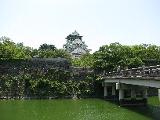Last week in Japan by Netta_Khrys
The last week in Japan we stayed at two nice couch surfing hosts in Tokyo. In this huge metropole we wondered around areas such as Asakusa (market street and Senjo-ji temple), Akihabara (electronic market), Omote-Sando (fancy shopping street leading to Meiji Jingu Shrine) and Otemachi (Imperial Palace and business areas).
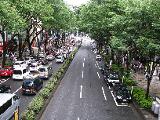
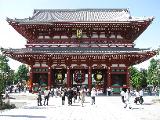
Photos
Slideshow
Our first wedding anniversary we spent in wonderful, quiet location by Lake Ashi in the Sengoku-hara Highlands (Palace hotel Hakone). We even got a room with window facing to mount Fuji as they didn’t find our booking at first. Perfect. We were lucky with the scenery the first day, as the second day the weather was rainy and completely foggy. We didn’t dare trying climbing mount Fuji this time, as climbing there is not recommended outside official climbing season, weather was unstable and our knees have been complaining already after carrying the big back bags.
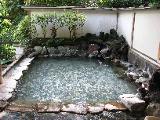
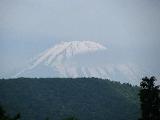
Photos
Slideshow
Interesting experiences in Japan
Getting used to the green tea, which in Japan is offered nearly with every meal, cold or hot, took us some time… We got our first experience with it already on the plane. We thought we had apple juice in the glass, but were surprised as the taste felt to us more like a fish liver oil or something… When I asked the air hostess what we had been served, she kindly brought me a second glass without asking. I guess this is Japan: weird food, misunderstanding english, but very polite and friendly people. The air hostesses at Japan airlines were the nicest ever with best service. They gave us champagne and a handwritten and signed card because of our honeymoon.
What comes to food, we mostly ate sushi and noodles, so there we didn’t have any big surprises. Tempura (fried vegetables, meat or seafood) sometimes offered special tastes. What was especially interesting in Japan were their desserts. Most of their desserts are made out of rice or red beans, which in european point of view hardly qualifies as a dessert, because they are not very sweet. Very good thing in Japanese restaurants is, that many of them have plastic example models of the portions on the restaurant window, so it is not so hard even for a foreigner to know what to order.
In Japan, there is an important effort made on the display of whatever is served to you. And even if you want something quick for lunch, it is possible (and popular) to buy a “bento”, a lunch-box, with a very nice box (wooden-made or plastic-that-looks-like-wood-made), with separate compartments for the different and very colourful pieces of food.
Japan is traditionally a cash economy when it comes to shopping, and only during past few years the acceptance of credit cards has increased. But it is still hard for a foreigner to find a cash machine which accepts foreign cards, at least Visa. We spent over two hours in Kyoto visiting around ten cash machines without finding one that accepts Visa card. Mastercard would have been accepted in some of them. We finally managed to find some foreigners who advised us to go to 7eleven shop for withdrawing cash. During this whole episode we experienced our first heavy rain in Japan, and even though we had umbrellas, our stuff including Netta’s passport suffered some water damage.
In Japan it is hard to find people who speak english. English at school is taught with a Japanese pronunciation, which doesn’t help conversation with them. Japan’s tourism industry targets mostly domestic travelers, and not all the information can be found in English. Even common things such as post cards can be hard to find.
In Japan old men seemed to be the most interested to come to talk to us and ask where we are from, even with very limited english. One man in the streets of Kochi bought us a small dictionary and invited us for a dinner in his house. We didn’t dare to go but later thought he probably would have been very happy to receive us. On our wedding anniversary very surprising thing happened. We were looking for a sushi restaurant, when a bit drunk older man insisted to help us. He led us to a restaurant, talked to the staff and left. After we had been eating for awhile, the restaurant staff came to us with 5000 yen (bit over 40€) note saying just about the only english word they knew, with japanese pronunciation, “presento”. We didn’t get it first, but the man had left the note to pay for our dinner. We felt really bad and asked them to give the money back for the man when they see him next, but they said they don’t know him. Finally we didn’t know what else to do but to enjoy huge amount of sushi plus some sake and be thankful.
Probably the funniest incident in Japan occured when we happened to leave few coins of tip for a young waiter. 5 minutes after leaving the restaurant the guy biked to catch us with a tiny bicycle and brought the coins back to us saying we forgot them. In Japan people don’t leave tips, and if you do they get confused. Plus here you can also see how honest they are. In Japan it is very safe and you don’t traditionally need to worry about your belongings. Although we heard from a local that things are also changing in Japan because the gap between the rich and poor starts to be bigger.
Funny things in Japan included toilets with heated seats, music, controllable flushing noise and pressure-adjustable bum washing facility. We never understood how to use those things.
Amazing was that there is hardly any trash cans around. People are expected to carry the trash home with them, and it seems to work, everywhere is actually clean.
We have had a great time visiting this country ! Now it’s time to move on to our next destination: South Korea.
posted in in English please !, news, voyages, worldtrip'09 | 3 Comments
